¶ Feature Introduction
¶ 1. Image Booster
22bit+: Improve the LED screen grayscale by 64 times to avoid grayscale loss due to low brightness and allow for a smoother image with more details in dark areas.
Precise Grayscale: Individually correct the 65,536 levels of grayscale (16bit) of the driver IC to fix the display problems at low grayscale conditions, such as brightness spikes, brightness dips, color cast and mottling.
Color Management: Support standard (Rec.709 / DCI-P3 / Rec.2020) and custom color gamuts, enabling more precise colors on the screen.

¶ 2. Dynamic Booster
Real-time analysis and dynamic adjustments are made to each frame to significantly improve the display contrast and image details for a better visual experience, and effectively control and lower the display power consumption, extending the lifespan of the LED screen.
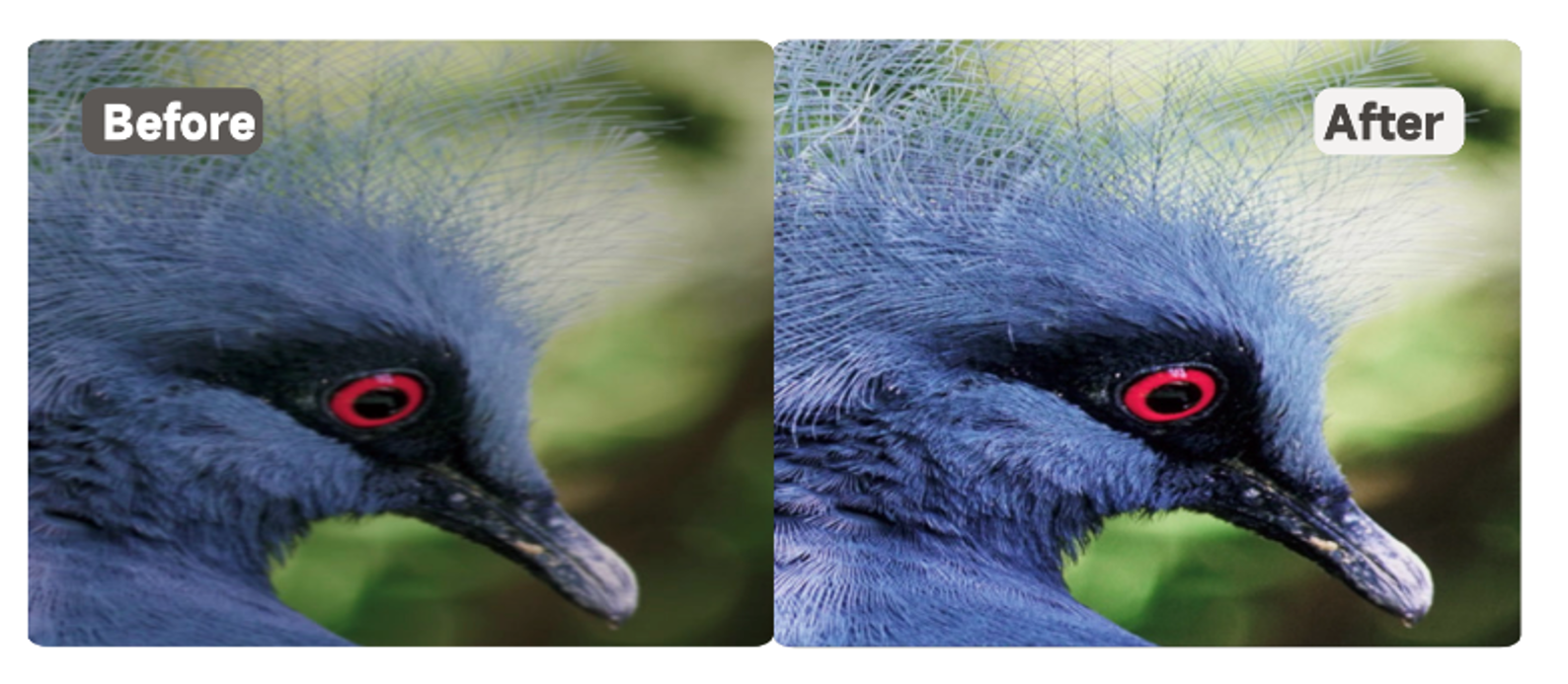
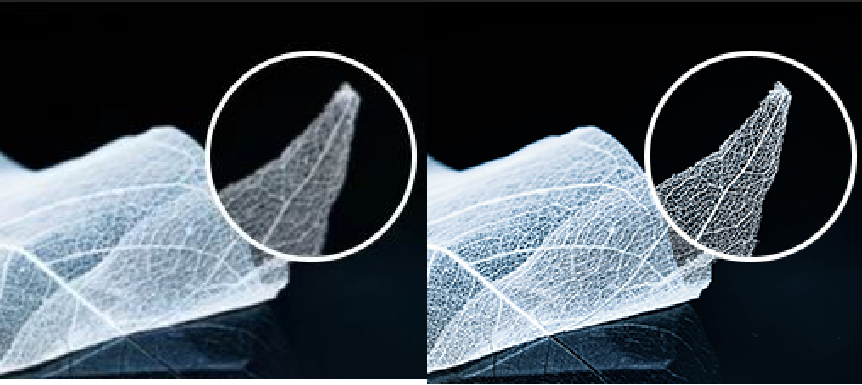
¶ 3. Thermal Compensation
The thermal compensation function is mainly used to solve the redness and blueness on the edge of the module or cabinet. This issue is caused by the uneven fan heat.
Sensor solution introduction: Add a temperature sensor in the LED cabinet, the sensor obtains the temperature of each cabinet in real time and passes it back to the control system, the control system automatically adjusts the compensation coefficient of each cabinet in real time according to the temperature.
Dynamic thermal compensation solution: The control system based on the use of the screen, according to the video source image, brightness, and other information, automatically predicts the thermal change law of the screen, intelligent algorithm, and automatic adjustment of compensation coefficient.
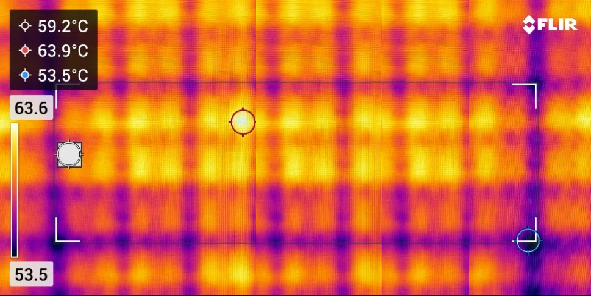
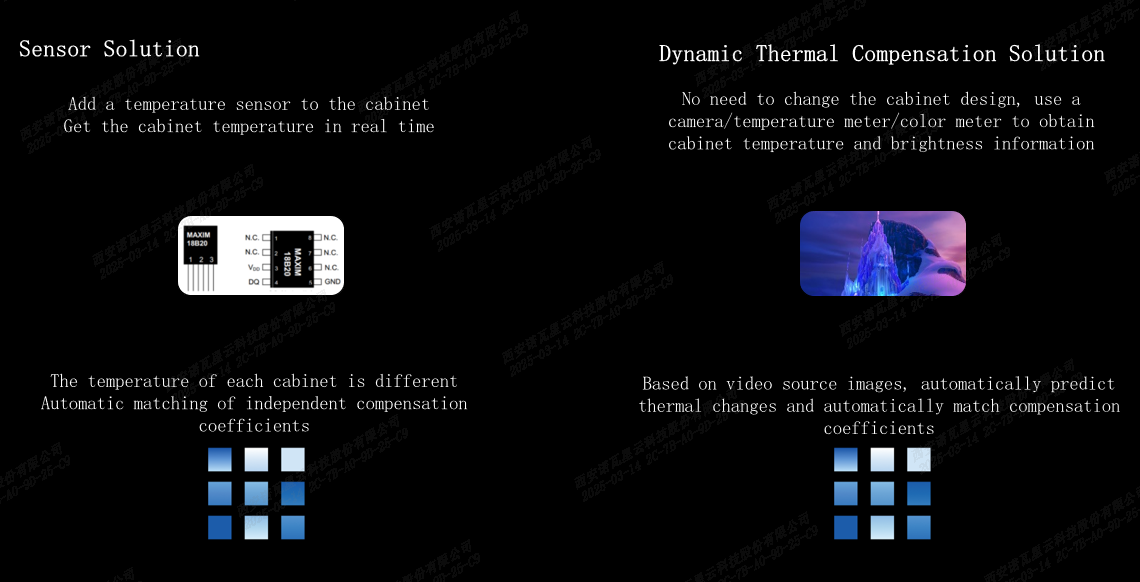
¶ 4. Multi-layer Full Grayscale Calibration
The Mura of the small-pitch LED display shows a nonlinear trend with the grayscale, and different gray scales have different Mura characteristics on the screen. The traditional single-layer calibration, since all grayscales share a correction coefficient, using the same correction coefficient to correct Mura with different shapes cannot guarantee the uniformity of the display screen in all grayscales, especially the middle and low grayscales, thus As a result, the display shows obvious color blocks, color casts, and pitting and other brightness and chromatic inconsistencies at low and medium gray scales.
Nova's self-developed full grayscale correction technology is precisely for the nonlinear characteristics of Mura under different grayscales, and generates its own unique correction coefficient for all grayscales so that the uniformity of all grayscales can be Very improved.

¶ 5. Color replacement
This feature is for replacing one color in the image with another color without affecting other colors. Typically, advertising videos feature products in only one color. However, promoting products in other colors from the same series requires laborious and time-consuming re-rendering. To simplify this process, the color replacement function enables users to directly replace the specified color in their advertising video with the desired color.
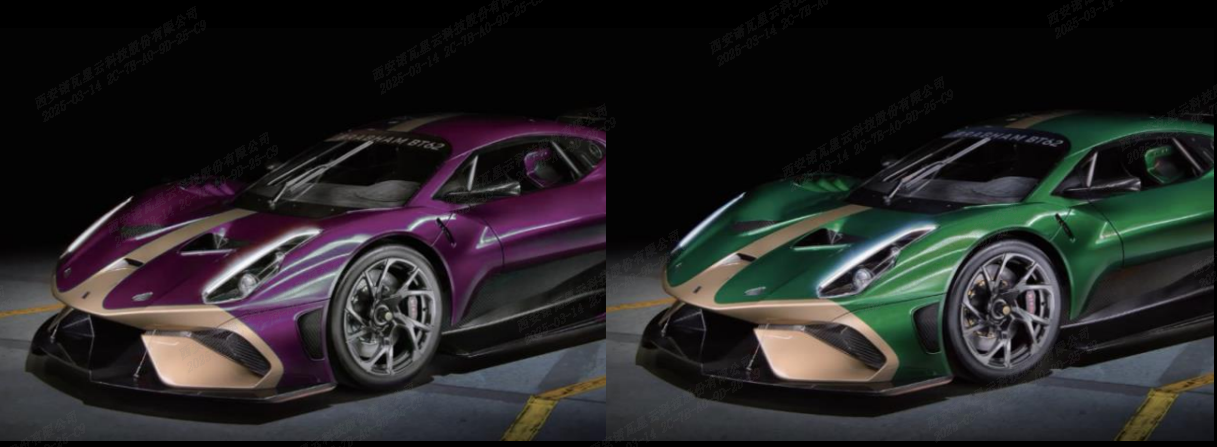
¶ 6. 3D LUT
VMP software supports loading 17x17x17/33x33x33/65x65x65 3D LUT files, and directly changes the display effect of the LED screen by adjusting the intensity of the effect use the 3D LUT file (.cube) to adjust the colors of the video source.

¶ 7. Color Curve
The Curves can quickly adjust the 0-255 level brightness output of the four colors of RGBW, and the display effect of the LED screen.

¶ 8. No Rectangle Limitation
Loading capacity is calculated by the physical cabinet pixels, free from rectangular limitation, helping maximize the loading capacity of controllers. No more capacity waste from leaving blank or irregular shape designs. Create without limits!
¶ 9. 14CH Color Correction
The feature color correction of 14 colors: red/orange/yellow/lime/green/turquoise/cyan/cobalt/ blue/violet/magenta/crimson/white/black. It corrects the active colors on the screen to make them more consistent with the target color. For the 12 colors, it adjusts hue, saturation, and brightness. For black and white, it adjusts R, G, and B.

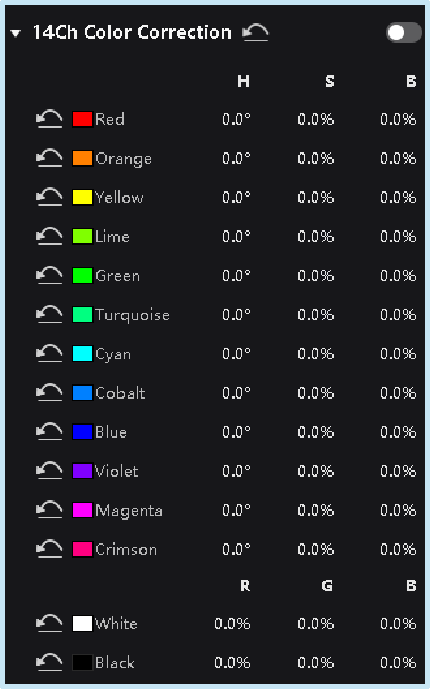
¶ 10. HDR
There are two HDR encoding formats supported: HDR10 and HLG. It complies with the SMPTE ST 2084/SMPTE ST 2086 standards, which allows for a wider color gamut, higher color depth, and greater brightness range. This makes the display quality richer, the contrast higher, and the details in shadow and highlight areas more refined.
¶ 11. Brightness Overdrive
The brightness overdrive function can help the LED display break through the peak brightness, bringing better contrast and saturation effects. It can increase the maximum brightness of the LED display without sacrificing uniformity, so as to meet the use of maximum brightness in different scenarios.
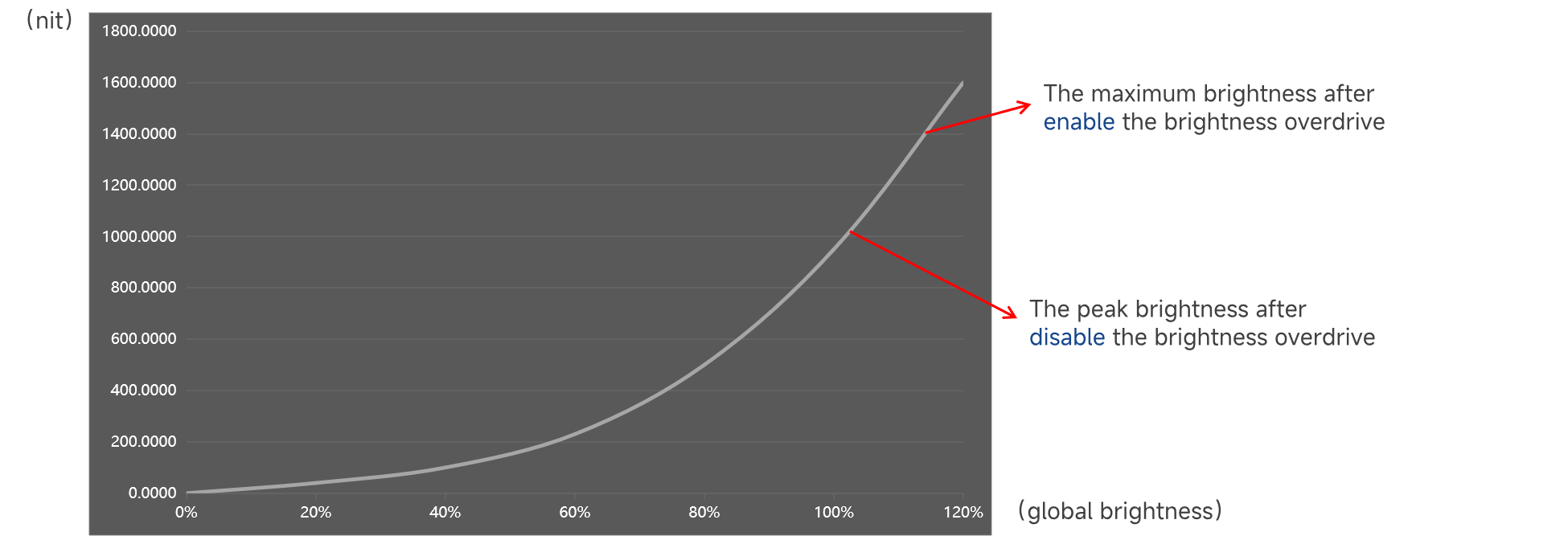
¶ 12. Low Latency
Support low latency and the controller load capacity is not reduced. The latency at the controller is 0 frames (less than 1 ms) in Send Only Controller working mode and 1 frame in All-In-One Controller working mode. Or support additional latency. Zero to two frames of latency can be added to the controller.
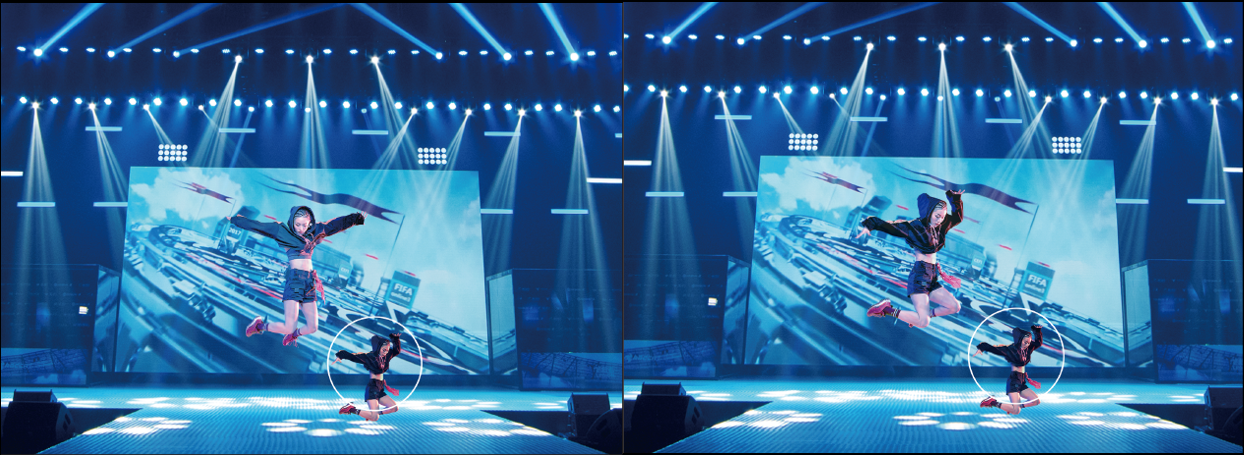
¶ 13. Multi Mode
Storing multiple sets of display configurations for a given screen type allows you to select different mode parameters based on the application scenario. This ensures that LED screens can achieve optimal display quality in various scenarios. For example, a P3.91 cabinet can be used in normal mode also can switched to Camera Studio mode to eliminate scan lines for xR virtual shooting.
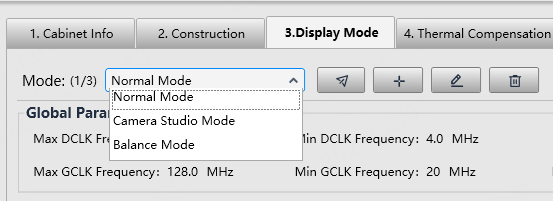
¶ 14. Adaptive Frame Rate
Automatically adapt to video inputs with different frame rates ranging from 23.98 Hz to 240 Hz and support the automatic calculation of optimal screen parameters based on the input source's frame rate. This ensures that the brightness deviation of the screen remains within 5% across different frame rates. It also supports precise frame rate adjustment in 0.01 Hz increments. Auto-adapt the input source frame rate. Switching the source without flickering.

¶ 15. Frame multiplication
Outputs images that are captured from multiple shooting angles with different backgrounds at the same time. Solid green backgrounds can also be inserted to allow for easy post-production adjustments. Supports high frame rates of up to 240 Hz. This feature accommodates multi-angle camera shooting to improve the screen performance under the camera.
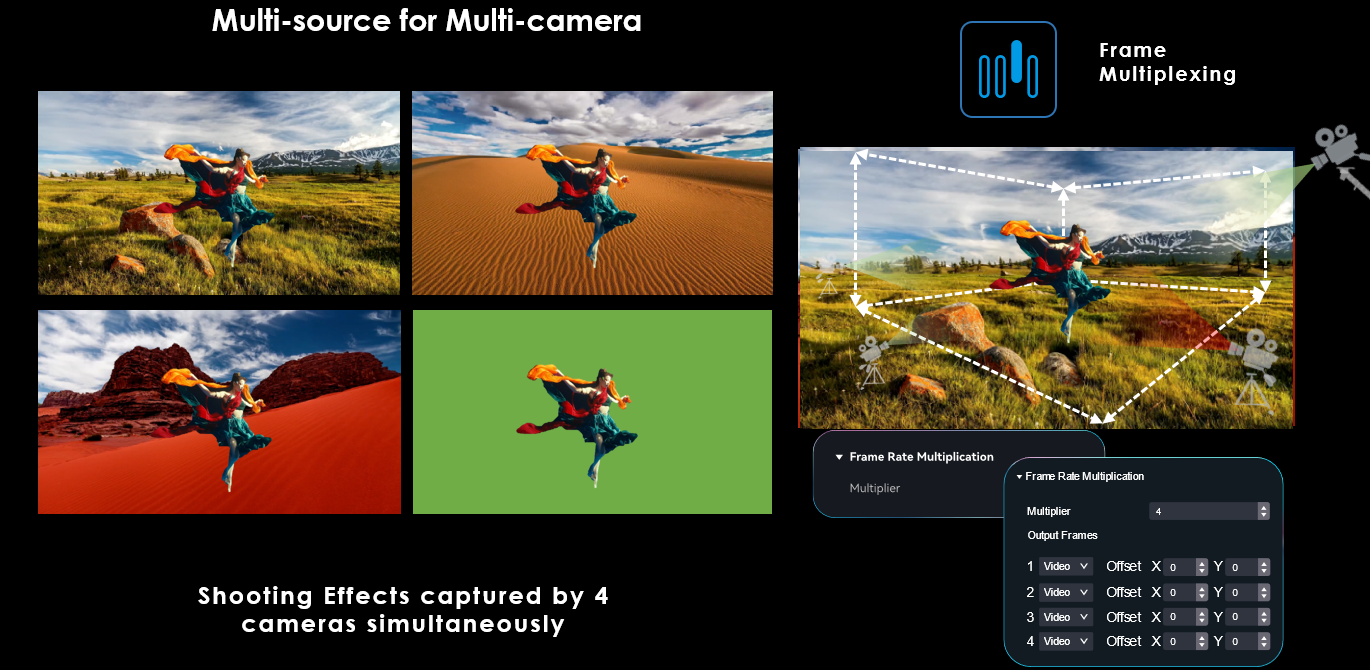
¶ 16. Shutter Fit
This feature adapts the screen and camera shutter to produce better filming results. It supports custom adjustment from 22.5° to 360° with an accuracy of up to 0.001°. Commonly used angles include 180°, 270°, and 360°.

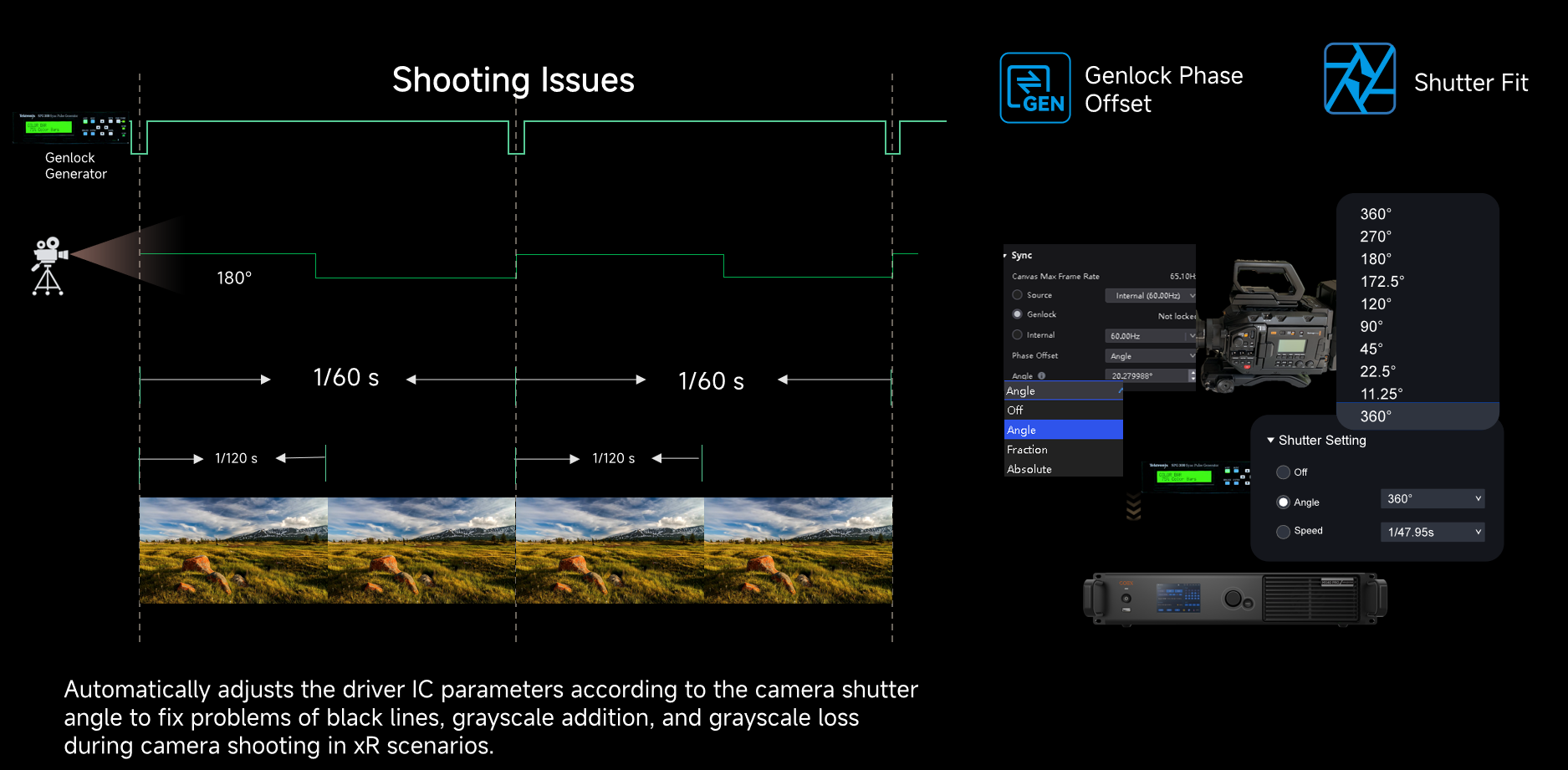
¶ 17. Genlock Synchronization
This feature enables the synchronization of various on-site systems, including the LED control system, shooting system, and rendering system. Combining these systems into a common signal synchronization system ensures that all system signals are precisely synchronized. Additionally, this feature supports setting phase offsets and adjusting the phase of the video frame relative to the selected sync source displayed on the screen. This can help resolve issues such as black lines and scan lines.
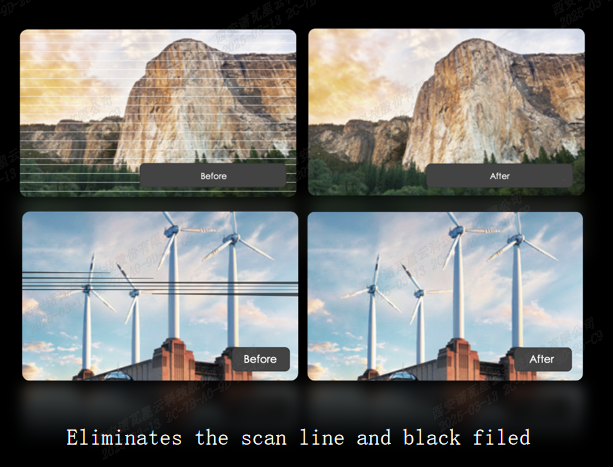
¶ Features Compatibility

Ultra Low Latency
Support low latency and the controller load capacity is not reduced. The latency at the controller is 0 frames (less than 1ms) in Send Only Controller working mode and 1 frame in All-In-One Controller working mode. Support additional latency. Zero to two frames of latency can be added to the controller.
3D
The COEX series products adopt active shutter 3D technology to be 3D-ready. This is achieved by increasing the refresh rate of the screen, splitting the image into two distinct halves for the left and right eyes. These two sets of images are displayed in rapid succession, alternating seamlessly. In tandem, a 3D emitter synchronizes with the 3D glasses via a precise timing signal. This signal ensures that the glasses alternate between blocking each eye, permitting each to view their corresponding images precisely when intended. This process creates stereoscopic 3D images.
Genlock
By providing a stable reference signal, Genlock helps multiple video devices keep line refresh synchronized when they are on the same output, avoiding flickering or streaking.
Additional Frame Latency
Extra frame latency can provide the latency frames required by the user.
Frame multiplication
Outputs images that are captured from multiple shooting angles with different backgrounds at the same time. Solid green backgrounds can also be inserted to allow for easy post-production adjustments. Supports high frame rates of up to 240 Hz. This feature accommodates multi-angle camera shooting to improve the screen performance under the camera.

HDR
HDR, the full name of which is High Dynamic Range, is a video image format that aims to define a wider dynamic range. HDR technology makes the bright parts of the image brighter and the dark parts darker while retaining more details, making the image more realistic and vivid.
Brightness Overdrive
The brightness overdrive function can help the LED display break through the peak brightness, bringing better contrast and saturation effects. It can increase the maximum brightness of the screen body without sacrificing uniformity, to meet the use of maximum brightness in different scenes.
¶ Working Mode

We consistently enhance and refine the content of our Wiki articles.
If you find any mistakes or errors, please contact us.
Your continuous feedback and support will help us further improve our products and content.